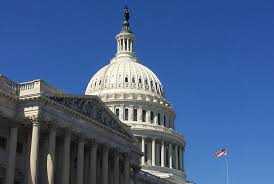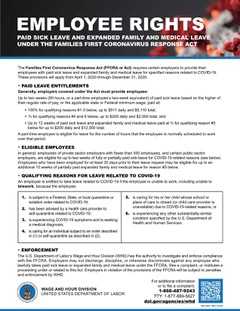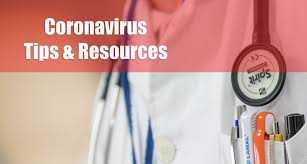APR 2020, Volume 17, Issue 4
Overview
- Families First Coronavirus Response Act
- FFCRA Overview
- Interim Guidance to Plan and Respond COVID-19
- Wellness Resources while teleworking or sheltering in place
- Best Practices for Non-essential Businesses
Families First Coronavirus Response Act
(courtesy of DOL)
The U.S. Department of Labor today announced new action regarding how American workers and employers will benefit from the protections and relief offered by the Emergency Paid Sick Leave Act and Emergency Family and Medical Leave Expansion Act, both part of the Families First Coronavirus Response Act (FFCRA). The department’s Wage and Hour Division (WHD) posted a temporary rule issuing regulations pursuant to this new law, effective today, April 1, 2020.
FFCRA helps the United States combat the workplace effects of COVID-19 by reimbursing American private employers that have fewer than 500 employees with tax credits for the cost of providing employees with paid leave for specified reasons related to COVID-19. The law enables employers to keep their workers on their payrolls, while at the same time ensuring that workers are not forced to choose between their paychecks and the public health measures needed to combat the virus. WHD administers the paid leave portions of the FFCRA.
“The FFCRA reflects a swift response by President Trump and Congress to the impact coronavirus is having on workers,” said Secretary of Labor Eugene Scalia. “The bill provides unprecedented paid leave benefits to American workers affected by the virus, while ensuring that businesses are reimbursed dollar-for-dollar. This is one of a number of important actions being taken to protect and sustain workers and their families during this time of need.”
“With so many workers and so many employers struggling with the effects of these unprecedented conditions, this rule provides answers and relief,” said Wage and Hour Division Administrator Cheryl Stanton. “We remain committed to providing the information and tools required for employees and employers alike to be fully informed about their rights and protections under this new law.”
WHD will post a recorded webinar on Friday, April 3, 2020, to provide interested parties a more in-depth description and help them learn more about the FFCRA. To view the webinar visit www.dol.gov/agencies/whd/pandemic.
WHD offers a number of plain-language compliance assistance materials to explain FFCRA’s benefits and requirements. Tools include a Fact Sheet for Employees and a Fact Sheet for Employers, available in both English and Spanish, and an expansive list of Questions and Answers addressing the questions WHD has most frequently received from stakeholders to date. Available guidance also includes two new posters, one for federal workers and one for all other employees, available in both English and Spanish, that will fulfill notice requirements for employers obligated to inform employees about their rights under this new law, Questions and Answers about posting requirements, and a Field Assistance Bulletin describing WHD’s 30-day non-enforcement policy.
WHD provides additional information on common issues employers and employees face when responding to COVID-19 and its effects on wages and hours worked under the Fair Labor Standards Act and job-protected leave under the Family and Medical Leave Act at www.dol.gov/agencies/whd/pandemic.
For more information about the laws enforced by the WHD, call 1-866-4US-WAGE, or visit www.dol.gov/agencies/whd. For further information about COVID-19, please visit the U.S. Department of Health and Human Services’ Centers for Disease Control and Prevention.
- - - -
FFCRA Overview
Poster Requirements: distribute to all employees.
- Post in conspicuous place on premises in same area of federal and state labor posters (including multiple buildings)
- Include on intranet and/or email to employees if working off-site or remotely.
- Only required to be given to current employees.
- Add to new hire packets for new employees.
Emergency Paid Leave
- Employers are required to provide 80 hours of fully paid sick leave to full-time employees (pro-rata rules would apply to part-time employees) on top of any other existing paid leave program of the employer.
- Leave provided under this provision becomes effective 4/1/20 and will sunset on December 31, 2020.
- Private employers with 500 or fewer employees must provide paid sick leave while a public agency or any other entity that is not a private entity or individual and employs 1 or more employees.
- Private Employers and Public Agency are defined as those engaging in commerce.
Covered employees to receive 100% pay:
- Employee is subject to governmental quarantine or isolation order related to COVID-19;
- Employee has been advised by healthcare provider to self-quarantine due to concerns related to COVID-19;
- Employee is experiencing symptoms of COVID-19 and seeking medical diagnosis;
Employers would be required to pay employees their full wages, not to exceed $511 per day or $5,110 total over the entire paid sick leave.
Covered employees to receive 2/3 of pay:
- Employee is caring for an individual who is subject to government quarantine or isolation order related to COVID-19 or an individual who has been advised by a healthcare provider to self-quarantine due to concerns related to COVID-19;
- Employee is caring for their child whose school or place of care is closed, or childcare provider is unavailable due to COVID-19 related reasons; or
- Employee is experiencing any other substantially-similar circumstances related to COVID-19 as specified by the Department of Health and Human Services, in consultation with DOL.
Employers would be required to pay employees two-thirds of their wages, not to exceed $200 per day and $2,000 total over the entire paid sick leave.
Employers are prohibited from retaliating against any employee who takes emergency paid sick leave.
Employers who violate the emergency paid sick time requirements are subject to fines and imprisonment pursuant to FLSA.
Exclude certain health care providers and emergency responders from the definition of eligible employee; and
Exempt small businesses with fewer than 50 employees if the above requirements would jeopardize the viability of the business going forward.
FMLA Expansion
Up to 12 weeks leave would cover employees who are unable to work (or telework) because the employee is caring for their child (18 years or younger) because the school is closed, or childcare provider is unavailable due to a public health emergency.
- Employers are not required to pay initial ten days of leave.
- Employees may substitute accrued vacation, personal or sick leave to cover unpaid leave portion.
- Employers must pay ten remaining weeks of leave at a rate not less than two-thirds of employee’s regular rate, not to exceed $200 per day and $10,000 in total.
This would be reduced by previously used FMLA (rolling 12 months).
- - - -
Additional FFCRA Items
- Benefits: continue as if active employee, if in waiting period then becomes effective as if actively working.
- Pay: can employer pay more than the required 2/3 (employee chooses to use their existing company benefits)? Yes, the company will only get tax credit for 2/3.
- Teleworking during nonbusiness hours: not eligible for eligible for expansion leave.
- Termination: unused leave will not be paid out.
- Retro: it is not retroactive prior to 4/1/20.
- Carry-over: if it isn’t used, it will not be carried over to 1/1/21.
- Intermittent leave: depends on why and allowable if employer agrees. (think about telework with children home).
- Business closes while on leave: leave ends when employer closes.
- Employee sent home and not getting paid prior to 4/1/20: employee not eligible.
- Employee furloughed on or after 4/1/20: employee not or no longer eligible.
- - - -
Interim Guidance to Plan and Respond COVID-19
The Centers for Disease Control and Prevention (CDC) provides interim guidance based on what is currently known about the Coronavirus Disease 2019 (COVID-19).
Recommended strategies for employers to use now:
Actively encourage sick employees to stay home:
- Employees who have symptoms of acute respiratory illness are recommended to stay home and not come to work until they are free of fever (100.4° F [37.8° C] or greater using an oral thermometer), signs of a fever, and any other symptoms for at least 24 hours, without the use of fever-reducing or other symptom-altering medicines (e.g. cough suppressants).
- Employees should notify their supervisor and stay home if they are sick.
- Ensure that your sick leave policies are flexible and consistent with public health guidance and that employees are aware of these policies.
- Talk with companies that provide your business with contract or temporary employees about the importance of sick employees staying home and encourage them to develop non-punitive leave policies.
- Do not require a healthcare provider’s note for employees who are sick with acute respiratory illness to validate their illness or to return to work, as healthcare provider offices and medical facilities may be extremely busy and not able to provide such documentation in a timely way.
- Employers should maintain flexible policies that permit employees to stay home to care for a sick family member. Employers should be aware that more employees may need to stay at home to care for sick children or other sick family members than is usual.
Separate sick employees:
- CDC recommends that employees who appear to have acute respiratory illness symptoms (i.e. cough, shortness of breath) upon arrival to work or become sick during the day should be separated from other employees and be sent home immediately. Sick employees should cover their noses and mouths with a tissue when coughing or sneezing (or an elbow or shoulder if no tissue is available).
Emphasize staying home when sick, respiratory etiquette and hand hygiene by all employees:
- Place posters that encourage staying home when sick, cough and sneeze etiquette, and hand hygiene at the entrance to your workplace and in other workplace areas where they are likely to be seen.
- Provide tissues and no-touch disposal receptacles for use by employees.
- Instruct employees to clean their hands often with an alcohol-based hand sanitizer that contains at least 60-95% alcohol or wash their hands with soap and water for at least 20 seconds. Soap and water should be used preferentially if hands are visibly dirty.
- Provide soap and water and alcohol-based hand rubs in the workplace. Ensure that adequate supplies are maintained. Place hand rubs in multiple locations or in conference rooms to encourage hand hygiene.
- Visit the coughing and sneezing etiquette and clean hands webpage for more information.
Perform routine environmental cleaning:
- Routinely clean all frequently touched surfaces in the workplace, such as workstations, countertops, and doorknobs. Use the cleaning agents that are usually used in these areas and follow the directions on the label.
- No additional disinfection beyond routine cleaning is recommended at this time.
- Provide disposable wipes so that commonly used surfaces (for example, doorknobs, keyboards, remote controls, desks) can be wiped down by employees before each use.
- - - -
Wellness Resources while teleworking or sheltering in place
- Planet Fitness: https://www.delawareonline.com/story/news/coronavirus-in-delaware/2020/03/17/amid-covid-19-fears-planet-fitness-offers-free-online-classes/5061944002/
- Patient: https://patient.info/news-and-features/how-to-exercise-at-homein-isolation
- TV 6 Video: https://www.kwqc.com/content/sports/Workouts-To-Do-At-Home-During-The-COVID-19-Outbreak--569003781.html
- - - -
Best Practices for Non-essential Businesses
Use this time to provide the following opportunities for your workforce while they are unable to work:
- Professional Development (On-line training or self-help/development books)
- Develop Standard Operating Procedures
- Update job descriptions and physical demands of position
- Assign projects that are on the back burner or wish list
- Communicate with team to keep them informed and engaged
Contact HR Strategies staff at 302.376.8595 or info@hrstrategies.org if you would like support or would like to learn more about the items in this newsletter. Please contact us if you would like to be added to our Monthly Strategies mailing list or if you would like for us to add someone to our mailing list.
Find more related articles:
- COVID 19
- Families First Coronavirus Response Act
- FFCRA
- Emergency Paid Sick Leave Act
- Emergency Family And Medical Leave Expansion Act
- Wage And Hour Division WHD
- Field Assistance Bulletin
- Fair Labor Standards Act
- Poster Requirements
- Emergency Paid Leave
- FMLA Expansion
- Teleworking
- Intermittent Leave
- Employee Furloughed
- The Centers For Disease Control And Prevention CDC
- Acute Respiratory Illness
- Sick Leave Policies
- Cough And Sneeze Etiquette
- Non Essential Businesses


